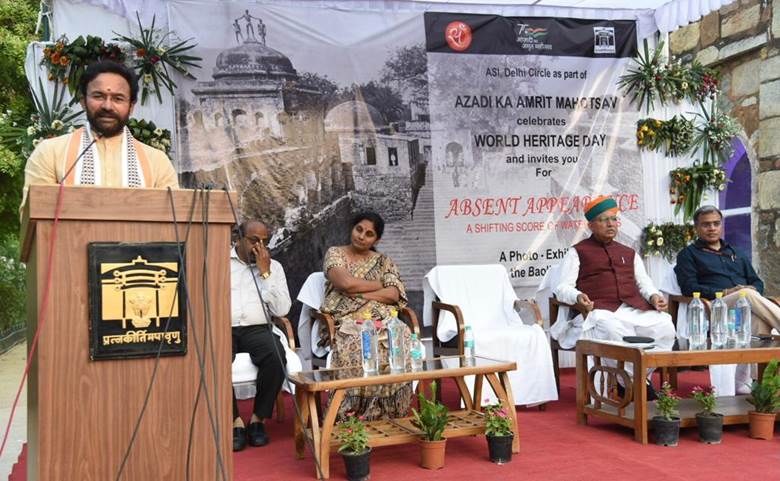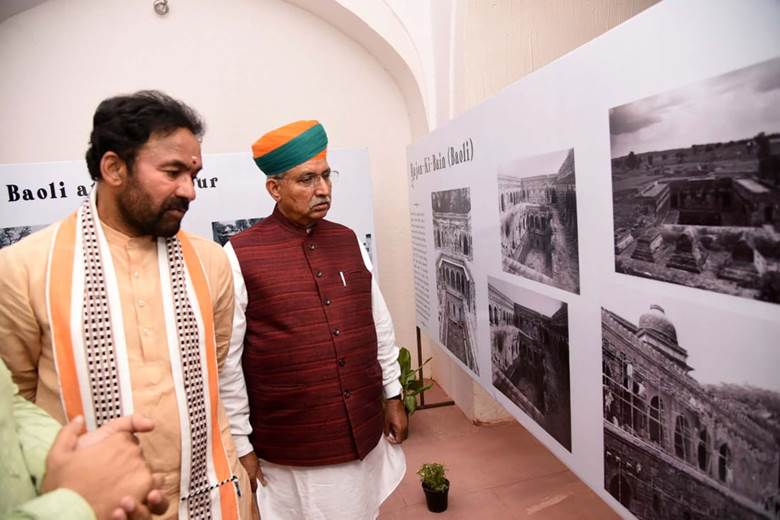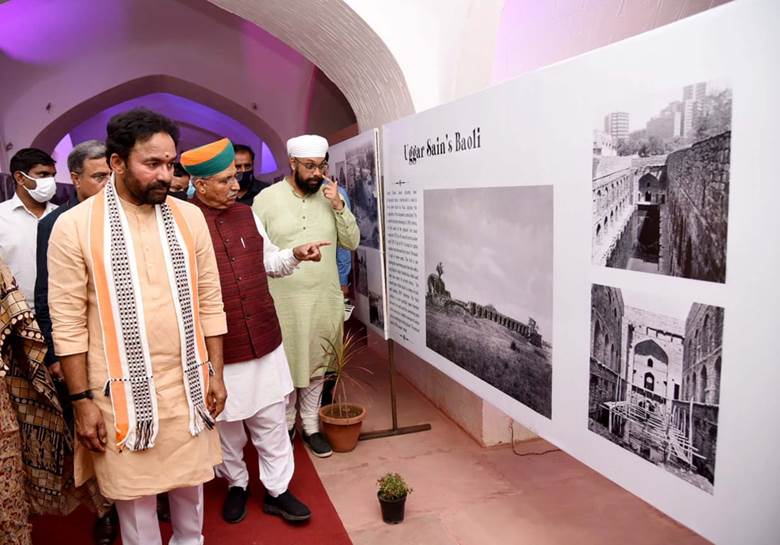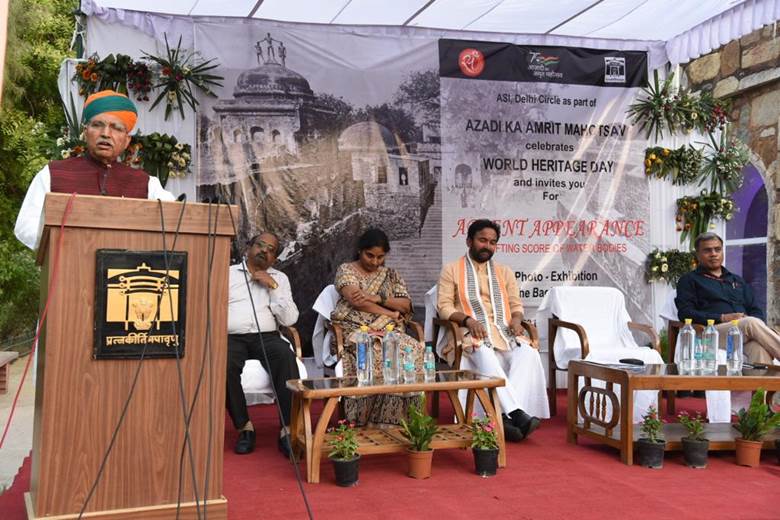Ministry of Culture
Shri G. Kishan Reddy inaugurates Photo exhibition on the Baolis of Delhi on the occasion of World Heritage Day
Worshipping nature is within our traditions and cultural heritage of the country: Shri G Kishan Reddy
Prime Minister Shri Narendra Modi has worked for both Vikas and Virasat to fulfil the dreams of the great men who sacrificed their lives to attain freedom: Shri G Kishan Reddy
ASI has done a great work in the field of excavation : Shri Arjun Ram Meghwal
प्रविष्टि तिथि:
18 APR 2022 9:19PM by PIB Delhi
Union Minister for Culture Shri G. Kishan Reddy inaugurated the Photo exhibition on the Baolis of Delhi “Absent Appearance- A Shifting score of water bodies” on the occasion of World Heritage Day as part of Azadi ka Amrit Mahotsav at Purana Qila today in New Delhi. Minister of State for Culture Shri Arjun Ram Meghwal also graced the event. Officers of Ministry of Culture and ASI were also present on this occasion.
The World Heritage Day is also known as the International Day for Monuments and Sites and is meant to create awareness about the diversity of cultural heritage. The theme for World Heritage Day 2022, is “Heritage and Climate”.



Speaking at the occasion, the Shri Reddy said, “Worshipping nature is within our traditions and cultural heritage of the country. Today, our responsibility increases as the whole world looks upto India which can give ways to solve the problems related to climate change and preserving cultural heritage”. At present India is a member of the “World Heritage Committee” of UNESCO. There are 40 world heritage sites in India out of which 32 are cultural, 7 are natural sites and 1 mixed category. Out of these, 24 monuments and archaeological sites are protected by the Archaeological Survey of India. In the list of World Heritage of 2021, the beautiful architectural marvel "Ramappa Temple" built in the 13th century of Kakatiya style and the ancient Harappan city of Dholavbira were included. In addition to this, 49 sites are listed in the tentative list.
The Union Minister also spoke about the efforts and the leadership shown by the Prime Minister in repatriating our heritage such as idols that were taken from India. “Today, about 228 heritage objects have been returned to India from various parts of the world. Before, 2014 there were only 13 objects that were returned”.
The Union Minister said “Our Ancestors have given us the great heritage which is one of the oldest in the world. Today as we are celebrating Azadi ka Amrit Mahotsav it is our responsibility to pass on this heritage to our future generation. Our Prime Minister Shri Narendra Modi ji has worked for both Vikas and Virasat to fulfil the dreams of the great men who sacrificed their lives to attain freedom”.
Shri Reddy added, “Shri Narendra Modi government is taking many initiatives and working towards saving the climate. We are moving towards usage of renewable energy, hydrogen and electric vehicles, organic farming and many initiatives like Swacha Bharat Abhiyan, Jal Jeevan Mission which aims to promote sustainable development and promote better living conditions for our citizens”.

On the occasion, Shri Arjun Ram Meghwal said that ASI has done a great work in the field of excavation and he also highlighted the need for continuing such good work. He also said that bringing back of Annapurna idol is a great achievement by ASI.
Baoli:
Since the inception of human civilization harnessing water for agriculture, daily consumption and other ritualistic activities is a general practice. As per climatic conditions ranging from aridity to availability of water the civilizations had adopted various techniques in the usage and storage of water; baolis/stepwells feature in one such technology. The purpose of the baolis' were not only restricted for the consumption of water, but adding to the environmental conditions the baoli's established a deep relationship of faith in the water god, thereby giving the structures a religious identity.
The word the Baoli/Bawdi has derived from the Sanskrit word wapi or vapi/vapika. Baoli is commonly used in Gujarat, Rajasthan and parts of North India. The strategic locations of the baolis imply their importance and utility to a great extent. Stepwells located in the edge of the habitation like towns or satellite villages are mostly secular structures from where people can draw water and utilize the space for cool gathering. The stepwells near the trade routes were mostly treated as resting places whereas the stepwells with terracotta rims were seen near the agricultural lands. The system of stepwells/baolis collapsed due to the pressure of decentralisation and agriculture intensification.
Speaking of Baolis of Delhi, as per the published information there are nearabout 32 medieval baolis out of which 14 baolis are either lost or buried. Further out of 18 baolis, 12 baolis are Centrally Protected and are under the protection of ASI. A typical baoli usually consists of three elements, the well in which the water is collected, the flight of steps to reach the ground water through several stories and interconnected pavilions. Generally, the step wells are U - shaped but there are always exceptions in architecture and L - shaped rectangular or octagonal stepwells are also not uncommon.
*******
NB/OA /SK
(रिलीज़ आईडी: 1817893)
आगंतुक पटल : 1656